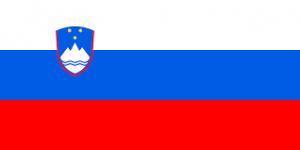Language/Slovenian/Grammar/Adjective-Agreement
| ◀️ Eating Out — Previous Lesson | Next Lesson — Comparative and Superlative Adjectives ▶️ |
Welcome to today's lesson on Adjective Agreement in Slovenian! This topic is crucial for anyone eager to express themselves accurately and beautifully in Slovenian. Adjectives in Slovenian not only describe nouns but also need to align with them in terms of gender, number, and case. By mastering this aspect of Slovenian grammar, you'll be able to enhance your conversations and make your speech more fluid and natural.
Lesson Structure
In this lesson, we will:
1. Understand the importance of adjective agreement.
2. Explore the rules of agreement concerning gender, number, and case.
3. Provide numerous examples to illustrate each point.
4. Engage in practical exercises to test your understanding.
Importance of Adjective Agreement
Adjective agreement in Slovenian is a foundational aspect of the language. Adjectives modify nouns, providing essential details that enhance communication. When adjectives agree with nouns, they not only sound right but also convey the correct meaning. For example, saying "a big dog" vs. "big dogs" in English is straightforward, but in Slovenian, the endings of the adjectives change based on the noun's gender and number. This nuance adds richness to the language and is essential for anyone aiming for fluency.
Rules of Adjective Agreement
Gender
Slovenian nouns are categorized into three genders:
- Masculine (moški)
- Feminine (ženski)
- Neuter (srednji)
Adjectives must agree with the nouns they modify in gender. Here are the endings typically used for adjectives:
- Masculine: -i (nominative singular), -ega (genitive singular)
- Feminine: -a (nominative singular), -e (genitive singular)
- Neuter: -o (nominative singular), -ega (genitive singular)
Number
Nouns can be either singular or plural. Adjectives also change their endings based on the number of the nouns they describe.
- Singular: use the singular endings
- Plural: change endings to -i for masculine, -e for feminine, and -a for neuter.
Case
Slovenian has six grammatical cases that affect adjective endings. The most common cases are nominative, accusative, and genitive. Adjectives must match the noun in the case being used.
Examples of Adjective Agreement
Let's look at some examples to illustrate how adjectives agree with nouns in Slovenian:
| Slovenian | Pronunciation | English |
|---|---|---|
| lep pes | lep pɛs | a beautiful dog (masculine singular) |
| lepa mačka | lepa maːtʃka | a beautiful cat (feminine singular) |
| lepo drevo | lepo dɾeːvo | a beautiful tree (neuter singular) |
| lepi psi | lepi psi | beautiful dogs (masculine plural) |
| lepe mačke | lepe maːtʃke | beautiful cats (feminine plural) |
| lepa drevesa | lepa dɾeːvɛsa | beautiful trees (neuter plural) |
| stare knjige | staɾe kɲiːɡɛ | old books (feminine plural) |
| nov avto | nɔv ɑʊ̯to | a new car (masculine singular) |
| nova avtomobila | nɔva ɑʊ̯tɔmɔbila | new cars (feminine plural) |
| nova hiša | nɔva hiːʃa | a new house (feminine singular) |
Exercises
Now, let’s put what you’ve learned into practice with some exercises!
1. Identify the correct adjective form: Choose the correct form of the adjective to complete the sentence.
- Sentence: "Ta ____ pes je lep." (This ___ dog is beautiful.)
- Options: (a) lepa, (b) lepo, (c) lep
- Answer: (c) lep
2. Translate the sentence: Translate the following sentence into Slovenian.
- "The new car is fast."
- Answer: "Nov avto je hiter."
3. Match the nouns with the correct adjectives: Draw lines to connect the nouns with the correct adjectives.
- Nouns: mačka (cat), hiša (house), drevo (tree)
- Adjectives: lepa (beautiful), veliko (big), staro (old)
4. Fill in the blanks: Fill in the blanks with the correct adjective form.
- "Imam ____ knjigo." (I have a ____ book.)
- Answer: "Imam lepo knjigo."
5. Choose the correct plural form: What is the correct plural form of "lep pes" (beautiful dog)?
- Answer: "lepi psi"
6. Rewrite the sentence: Change the adjective to match the plural form.
- Original: "Lep avto." (Beautiful car)
- Answer: "Lepi avti." (Beautiful cars)
7. Case matching: Identify the correct case in the following sentence.
- "Vidim ____ mačka." (I see ____ cat.)
- Options: (a) lepa, (b) lepo, (c) lepe
- Answer: (c) lepe
8. Create your own sentence: Write a sentence using a feminine noun and an appropriate adjective.
- Example: "Lepa mačka."
9. Translate the adjectives: Translate the following adjectives into Slovenian.
- "old", "big", "happy"
- Answer: "star", "velik", "srečen"
10. Fill in the blanks with case changes:
- "On ima ____ knjige." (He has ____ books.)
- Answer: "On ima stare knjige."
Conclusion
Understanding adjective agreement in Slovenian is an essential step toward mastering the language. By ensuring that your adjectives match the nouns in gender, number, and case, you'll make your sentences grammatically correct and much more expressive. Keep practicing, and soon you’ll be using adjectives with confidence!
Sources
Other Lessons
- Singular and Plural Nouns
- Cases
- The subjunctive mood and modal verbs
- 0 to A1 Course
- Nouns, articles and gender
- How to Use Have
- Past Tense
- Conditional and future tense
- Conjugation of verbs in the present tense
- Prepositions
| ◀️ Eating Out — Previous Lesson | Next Lesson — Comparative and Superlative Adjectives ▶️ |

